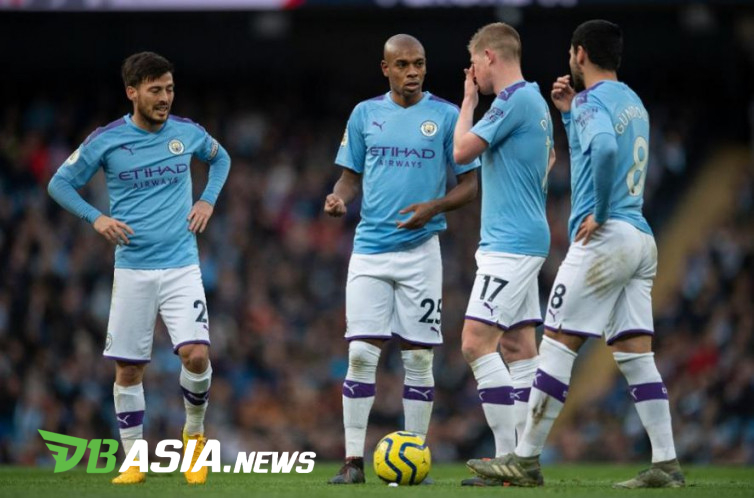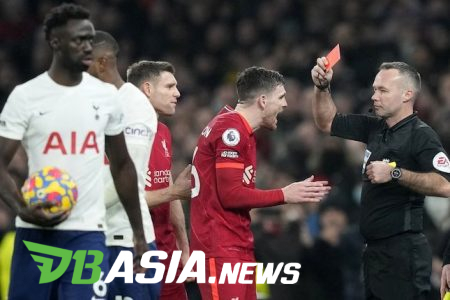Thursday, 14 May 2020
Manchester City’s weakness in Anticipating Long-Distance Kicks
By db-admin

DBasia.news – Manchester City this season has decreased in performance when compared to last season. At the moment Pep Guardiola’s troops are 25 points behind Jurgen Klopp’s Liverpool squad who are at the top of the table.
Regarding the performance of Liverpool, English football lovers are able to see for themselves how consistent they are with only one defeat in 29 matches, winning 27 times, and one draw.
Liverpool have also scored 66 goals and conceded 21 goals. So there is no need to question the quality of team play coached by Jurgen Klopp.
Interestingly Man City could not overshadow Liverpool’s consistency this season, whereas last season they won with 98 points and one point adrift of Liverpool.
A number of factors contributed to the decline in City’s performance from the departure of Vincent Kompany – the defender and captain of Man City – to the storm of injuries in the central defender.
These two factors contributed to the 31 goals scored by opponents against Ederson Moraes. Without Kompany, there is no leader in the back line.
The problem is further perplexing Pep Guardiola as Aymeric Laporte is away for injuries, and so is John Stones. Guardiola played Fernandinho who is incidentally the defensive midfielder and became a central defender.
“The slight decrease can be explained by the injury to Aymeric Laporte above the loss of Vincent Kompany in the heart of the defense,” said football pandit, Danny Murphy at Express.
“Fernandinho has been moved (to the back line) to cover and his influence in midfield has disappeared. Last season Laporte and Kompany with Fernandinho were in front of them. None of the pieces went well this season.”
Problems in defense and in the midst of defensive midfield positions have led to one big weakness for Man City this season: anticipating long-range kicks.
Opposite Long-distance Kick
Records from Tifo show that Man City have conceded seven goals from 31 total in the Premier League this season. They are in the third place where the most teams have conceded from distance or outside the penalty box.
Above Man City are Everton (46 total – eight from outside the penalty box) and Aston Villa (56 total – eight conceded from outside the penalty box). The percentage of City conceding from the scheme reached 22.6 percent and the number of rescue was 70.8 percent (with no results).
The number of rescues was fairly bad as they were ranked fifth of five teams namely Burnley (81.6 percent), Everton (76.5 percent), Chelsea (73.9 percent), and Newcastle United (85.7 percent).
The statistics were already showing a decline compared to Man City’s record last season. In the 2018-29 season City had a rescue rate of 91.3 percent. There is a clear decrease in the comparison.
So why can City concede goals more easily this season from a distance? The answer is simple: Fernandinho. Man City has no other Fernandinho from the team to play as a defensive midfielder despite recruiting Rodri from Atletico Madrid.
Rodri gave a positive value on the way the team arranged attacks in midfield and set the tempo of play, but Rodri was not Fernandinho. So far in City there are no players who is able to protect the central area as well as the 35-year-old Brazilian midfielder.
Given the record of eight Man City matches when Fernandinho became a central defender or missed a play, City won only twice against Bournemouth (3-1 in August 2019) and Southampton (2-1 in November 2019). The remaining two draws and three defeats.
A striking difference from Fernandinho and Rodri is the ability to close gaps in midfield. Fernandinho, despite being 35 years old, is good at positioning and chasing opponents to prevent them from having time and space to release long-range kicks.
That is not what Rodri is typical of a modern anchor midfielder: smart at managing games with accurate vision and passes, but needs a tandem in the midfield to help in the defensive phase. In short Rodri is a deep-lying playmaker like Xabi Alonso, Andrea Pirlo in the past.
As a result the midfield is not maintained either if Fernandinho becomes a central defender or absent and Rodri becomes a defensive midfielder. Opponents can penetrate from the second line, do a solo run and try their luck at kicking from a distance.
That moment happened because there was no central midfielder chasing the opponent and the defender was busy guarding the attacker’s movements. An example of that can be seen from Erik Lamela’s goal when City drew 2-2 against Spurs in August 2019.
Lamela ran from the side of the wing, shifted to the middle and fired without interruption from the defender and midfielder. A goal was created. Yet when Lamela kicked the ball there were four Man City players around him.
Man City’s weakness in anticipating long-range opponents’ kicks has also been one of their inconsistent factors this season. Homework, of course, for Pep Guardiola.
-

Sergio Aguero Talks about the Rivalry between Man City and Liverpool This Season
-

Jurgen Klopp confirms James Milner will stay at Liverpool
-

After Man City Struggled to Beat Arsenal, This Is What Pep Guardiola Said
-

Andrew Robertson’s joy and sorrow in the match against Tottenham
-

Liverpool refuses to purchase players who are not vaccinated